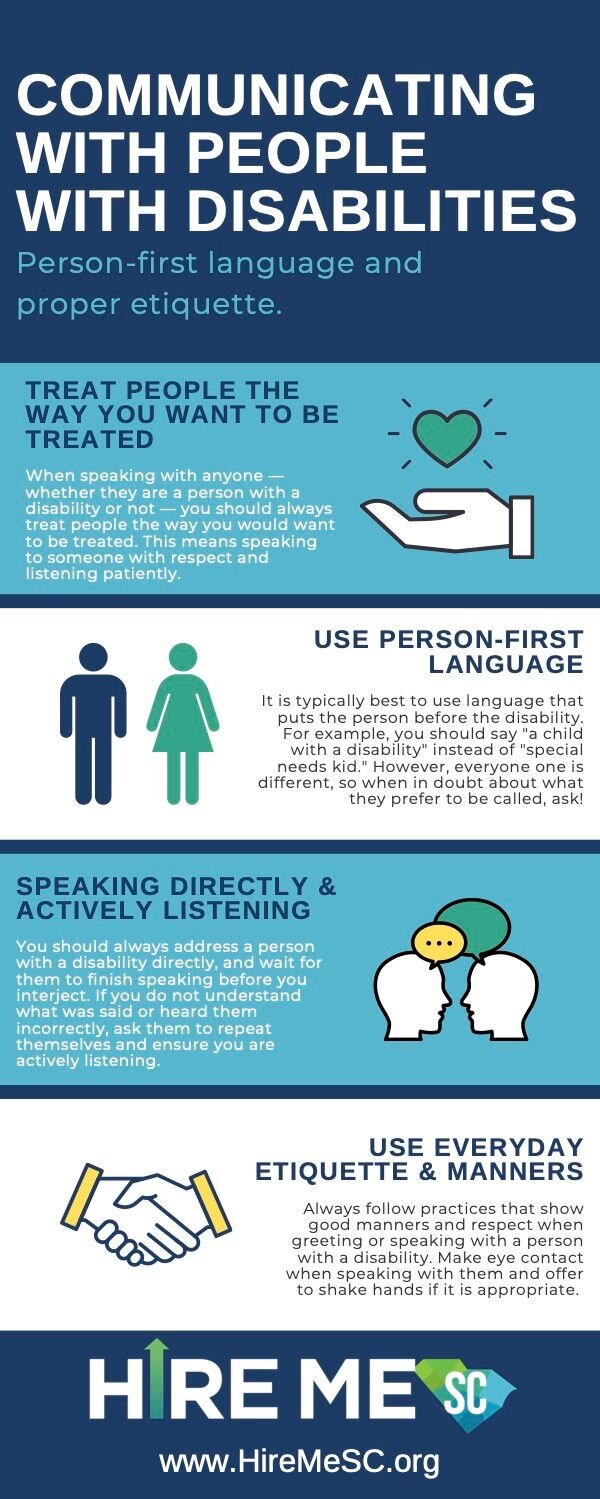How to Communicate with People with Disabilities
Talking to people with disabilities is the same as talking to people without disabilities — you should treat them with respect and speak to them directly. Oftentimes, people feel uncomfortable speaking to someone with disabilities, even though 1 in 4 Americans have some type of disability. If you’re having trouble speaking to a person with a disability, remember to treat people the way you want to be treated and do not push your discomfort onto them.
When communicating with someone with a disability, it is important to speak to them clearly and actively listen, waiting for the person to finish speaking before you interject. If you are unsure of what they said or did not hear them properly, ask the person to repeat what was said and be patient as you listen.
Follow good manners when you greet them, whether that’s a handshake or hug, and make eye contact. People with disabilities will frequently pick up on body language that expresses discomfort, so it is important to be relaxed and confident.
Overall, the most important thing to do is to speak to people with disabilities like people— because they are! Avoid remarks and actions that express benevolent ableism and use person-first language, such as a ”person with a disability ” rather than a “disabled person.” Understanding the etiquette for speaking to people — with or without disabilities — will ensure you are speaking to everyone the way they would like to be spoken to.
Visit our website to learn more about communicating with people with disabilities if you are a service provider or employer. Use the resources below to help improve your communication with people with disabilities.
If you need some quick tips on communicating with a person with a disability, check out this video.
Additional Sources:
The National League for Nursing: Communicating with People with Disabilities
Ada National Network: Guidelines for Writing about People with Disabilities
Title image by Crush Rush.

